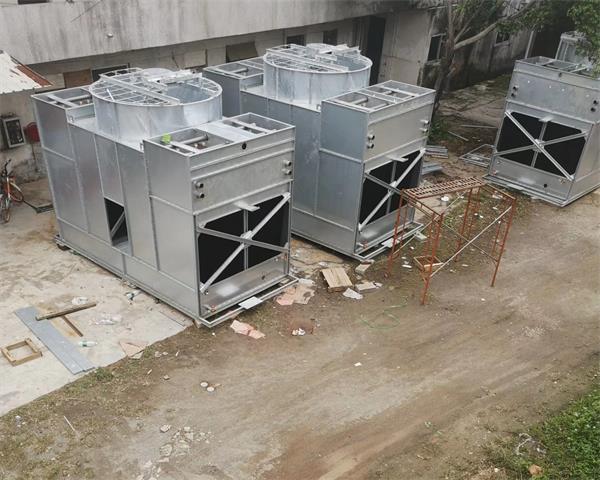
What is the working principle of a closed cooling tower
Closed cooling towers and open cooling towers are relative, and each type of cooling tower has its own working principle and advantages. So, what is the working principle of closed cooling towers? Simply put, a closed cooling tower has two cycles, one is the internal cycle and the other is the external cycle. Moreover, the closed cooling tower has no packing, and the copper tube surface cooler is the core part.
The internal circulation is connected to the target device, forming a closed circulation system. The circulating medium of this circulation system is soft water, which can cool the target device and quickly remove the heat from the cooling unit.
In the cooling tower, the external circulation can cool the cooling tower itself without any contact with the internal circulation water. It will only dissipate heat through the copper bell cooler inside the cooling tower. Of course, this cooling method can be automatically controlled.
In summary, the working principle of a closed cooling tower has two circulation systems, so it is important to understand these when using it.
What is a closed cooling tower and what are its forms?
Closed cooling tower, also known as closed cooling tower or closed cooling tower, what is a closed cooling tower and what are its forms? Below is an introduction for everyone.
Closed cooling tower originated from evaporative cooler, but in reality, it is a type of heat exchanger that effectively combines the performance of water-cooled cooler and conventional cooling tower. It can also be said to be a heat exchanger between water-cooled cooler and air-cooled cooler, which is why it is also called evaporative air cooler.
There are many forms of closed cooling towers, but they all have a common feature, which is spraying water outside the partition heat exchanger and forced ventilation. Heat will be cooled from inside the partition heat exchanger into the fluid, and then transferred to the spraying water outside the wall through the wall surface, and further transferred to the air through forced convection between the spraying water and air. Spray water can transfer heat to the air, mainly relying on the latent heat of spray water evaporation and the sensible heat exchange between spray water and air.
Article Address:https://www.trlen.com/news/746.html
Guangdong Trlon Energy-saving Air Conditioning Equipment Co., Ltd.
Contact:Mr. Wang
Free Hotline:4008-8383-95
Company Email:sales@trlon.com
Web Site:https://www.trlen.com/
Company Address: 1916A, Block A, David Donglong Business Building, Longhua, Longhua District, Shenzhen